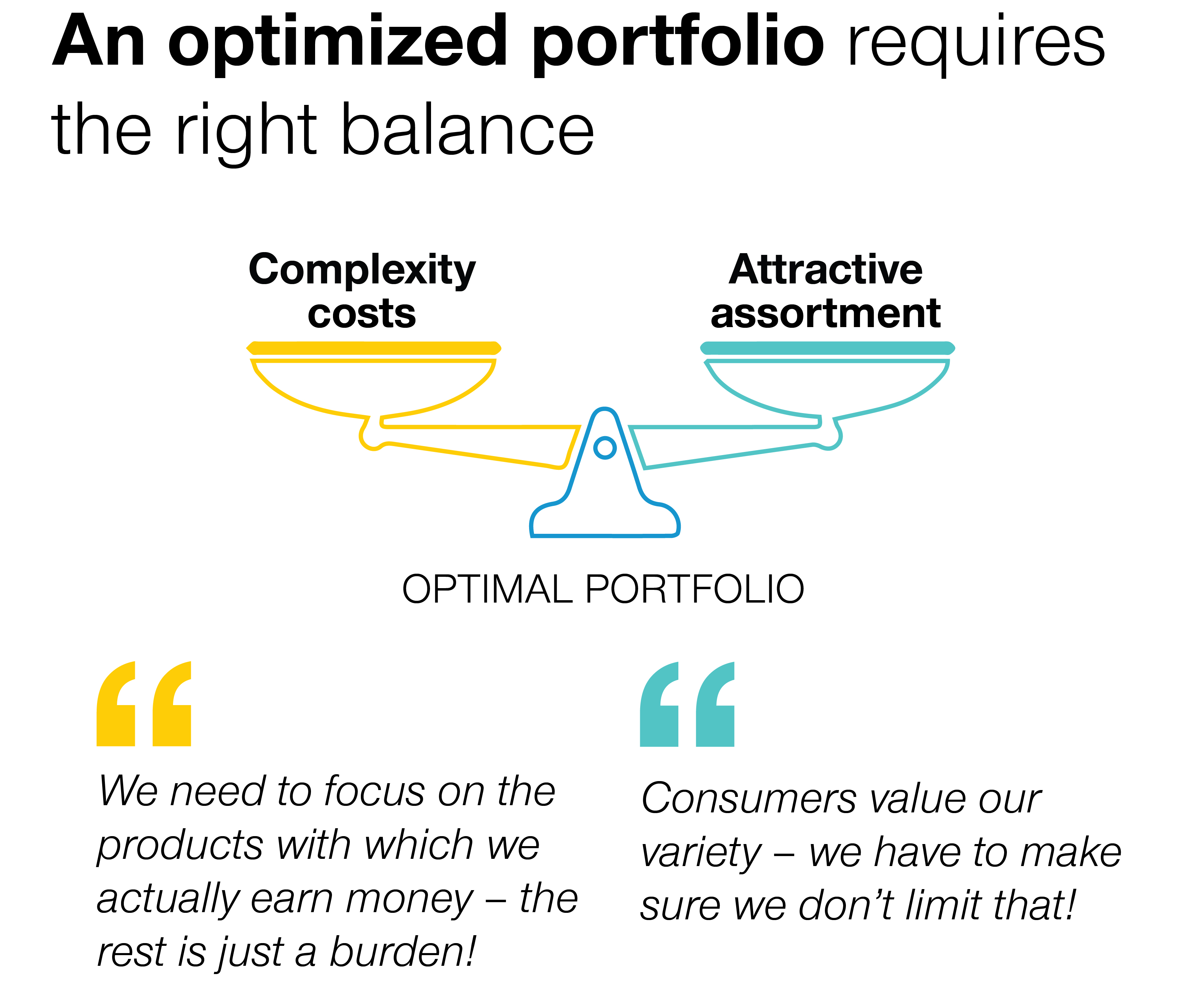Company profit margins are under attack. In a recent FD survey, it was found that 93% of C-Suite executives in the Netherlands expect a drop in profit margins of between 10-25%. That’s a scary number and requires businesses to take action to protect their profit margins.
Over the last two years, cost increases have been consistently inflated to double digits. Eventually, there was always going to be a point where costs could no longer be passed on straight to the customer. Businesses still want to do this, but they need to be smart about how they go about it. These cost pressures, paired with falling consumer confidence, consumer demand, and persistent inflation, mean that businesses operating in the consumer goods space – particularly suppliers – will be under constant pressure for the foreseeable future.
While businesses can’t take on inflation, they can leverage some of its symptoms and make bottom and top-line improvements that will secure them against financial pressure – and might even grab them some market share along the way.
This outlook – bleak though it may first appear – is in fact an opportunity for consumer goods firms to protect and even gain profitability by building the necessary revenue management capabilities within their organization, finding new ways to pass-through price increases and stand out from competitors. Therefore, this article provides you with 5 key actions organizations can take now to ensure their consumer goods arm is capable of protecting and even growing profitability even in these challenging times.
Here’s How To Thrive
It’s clear that businesses need to stimulate sales and now more than ever, protect profitability. Therefore, we’ve identified 5 key actions firms can take now to better protect their profitability based on our project experience and industry expertise.
1. Use Pricing Power Selectively
Using customer insights to understand where prices can be increased is becoming more important. Companies should take care to not interpret old price elasticity studies as the complete truth since these are quickly losing their value in the current environment. Price elasticity changes as consumer priorities change, and elasticities can also increasingly vary over customer and consumer segments. For example, younger segments, typically, change jobs more often and will be able to keep up their purchasing power while older segments might change their behavior more drastically. Designing different pricing scenarios is essential in making the right decision on volume, revenue, and profit.
Of course, businesses can increase their prices until those magic price points are hit. But, they need to seek other solutions - such as adjusting product sizing - to avoid surpassing this threshold. Embracing this method - adjusting and reducing packaging sizes to reduce costs - leaves shelf price untouched. In the same way, soda manufacturers adjusted serving sizes to contend with the sugar tax in the UK. If organizations can continue to pass on the cost increases they’re receiving from their supply chain, it will give them more time to steady the ship.
2. Optimize Channels and Portfolio
With profitability in mind, alongside mounting price sensitivity among consumers, businesses need to find channels that provide them with a strong capability to protect their profitability and build upon customer loyalty. A suitable channel to double down on this would be D2C channels – particularly e-commerce. By focusing on D2C channels, businesses can avoid having many links within a distribution chain hurting profit margins while also bringing the capability of building closer relationships with customers. That loyalty will go a long way when it comes to consumers picking a product from a shelf.

There also needs to be a focus on rationalizing the long tail and in turn improving profitability in the mix. Over time, manufacturers have been expanding their portfolio with “that one pack size that that customer really needs” or “that product that will fulfill a certain new customer need”. A decade later there is a very wide and historically grown portfolio with an extensive long-tail that does not contribute to any profit. A strategic portfolio mix does target the right consumer segments in the right channels with the right products, but there should be a balance between the right assortment and the complexity costs of an extensive long-tail. Therefore, companies can increase the profitability of their mix with a smart balancing act.
3. Standardize & Optimize Trade Terms
Another part of businesses that is often particularly complicated due to organic growth is the terms that are set up with the retailers they supply. Between different personnel, different retailers, and different products, many businesses have an encyclopedia of different trade terms that have been established over the years. These are costing those companies a chunk of the profit pool they share with retailers. To grab more of it, they must cut down on the cost of managing trade terms and agreements and make sure they’re getting the most from their retailers.
Besides standardizing trade terms, it has been shown to be worthwhile to spend time optimizing trade terms. To optimize trade terms and gain a greater share of the profit pool, businesses need to follow this three-step approach.
The first step is to rank suppliers based on their associated costs to see where the most potential lies. Secondly, businesses need to start analyzing their trade terms per supplier to see what the profit pool is, their current portion and what they consider a reasonable portion. Thirdly, they must review the qualitative part of their trade terms per supplier and propose to include conditional trade terms such as conditional discounts.
These conditional trade terms help retailers to increase the demand for their goods and thus increase revenue per SKU. For example, if a supermarket stocks the goods of a supplier, that suppler can offer them preferential terms for stocking products at eye level, or set up future terms so that if sales grow by x% they’ll provide a rebate.
4. Drive Effective Promotions
The problem faced by many consumer goods companies is that they run a whole host of promotions without any clear understanding of how effective they are. That has to stop. Of course, selling consumer goods can be challenging at the best of times, but with a recession looming, consumer goods companies need to ensure their promotions are extremely effective in terms of ROI as well as captured demand. Promotions are an important lever when businesses are facing an economic downturn. Therefore, they need to closely monitor and review their marketing spending and promotional activities to really get a grip on driving incremental sales and improving ROI.

They need to use promotions, marketing budgets, and promotional activities to optimize ROI and drive incremental sales. Kill promotions that aren’t delivering clear value. This will directly increase profitability. But, never avoid promotions completely. Remember, when consumer confidence is low, businesses need to rally their customer bases by activating them to purchase.
5. Embrace Change
For the previous five points to happen, businesses need to acknowledge the squeeze they face and accept that previous successful strategies are not likely to work in this particular climate they’re in right now. Therefore, now is the time to start building the right capabilities in organizations to support modern revenue management programs. That means being able to link sales, marketing, and finance – as complex a task as that might be – and all get behind the need to do things better.
It’s not easy for organizations to make this leap to a more sustainable kind of growth, but it is crucial to long-term success. It requires a thorough understanding of all five topics and beyond. To gain that knowledge businesses need to tap into in-depth articles on these topics to ensure they are in possession of all expertise to develop these capabilities within their firm.
Beyond The Here And Now
In the end, all business leaders should be concerned with finding ways to improve organizational performance through a more effective commercial strategy. Those who take these 5 key actions first will be ahead of the pack and capable of protecting and even growing profitability even in these challenging times.
Growth Summit for Consumer Industries
To help business leaders from consumer-oriented companies succeed in their quest for more sustainable growth in these challenging times, we organize a Growth Summit for Consumer Industries. Our Consumer Industries growth specialists and Ewald Frenay (Cloetta, Area President Middle Europe and International Markets) will inspire you with best practices on today's key boardroom topics: revenue growth management, sustainability and commercial digital transformation.
Please be aware the seats are limited and therefore it is recommended to quickly register via this form.








